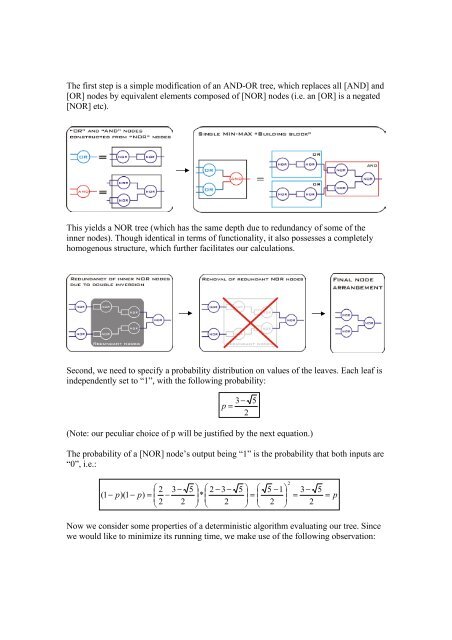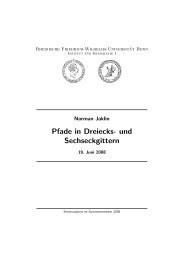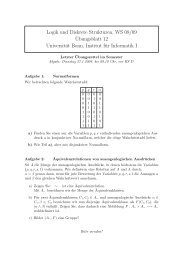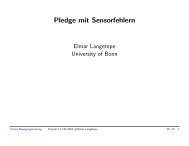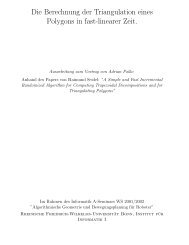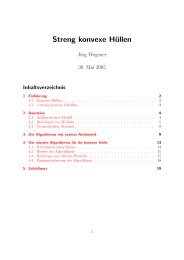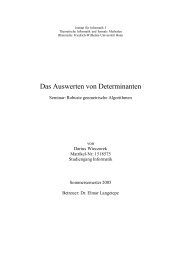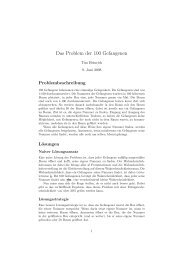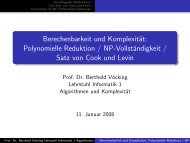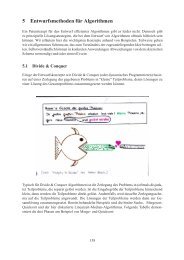Seminar on Randomized Algorithms Game-Theoretical Applications ...
Seminar on Randomized Algorithms Game-Theoretical Applications ...
Seminar on Randomized Algorithms Game-Theoretical Applications ...
You also want an ePaper? Increase the reach of your titles
YUMPU automatically turns print PDFs into web optimized ePapers that Google loves.
The first step is a simple modificati<strong>on</strong> of an AND-OR tree, which replaces all [AND] and<br />
[OR] nodes by equivalent elements composed of [NOR] nodes (i.e. an [OR] is a negated<br />
[NOR] etc).<br />
This yields a NOR tree (which has the same depth due to redundancy of some of the<br />
inner nodes). Though identical in terms of functi<strong>on</strong>ality, it also possesses a completely<br />
homogenous structure, which further facilitates our calculati<strong>on</strong>s.<br />
Sec<strong>on</strong>d, we need to specify a probability distributi<strong>on</strong> <strong>on</strong> values of the leaves. Each leaf is<br />
independently set to “1”, with the following probability:<br />
3−<br />
p =<br />
2<br />
5<br />
(Note: our peculiar choice of p will be justified by the next equati<strong>on</strong>.)<br />
The probability of a [NOR] node’s output being “1” is the probability that both inputs are<br />
“0”, i.e.:<br />
⎛ 2 3 − 5 ⎞ ⎛ 2 − 3 − 5 ⎞ ⎛ 5 −1⎞<br />
3 − 5<br />
(1 − p )(1 − p)<br />
= ⎜ ⎟ ⎜ ⎟ = ⎜ ⎟<br />
−<br />
*<br />
= =<br />
⎝ 2 2 ⎠ ⎝ 2 ⎠ ⎝ 2 ⎠ 2<br />
2<br />
p<br />
Now we c<strong>on</strong>sider some properties of a deterministic algorithm evaluating our tree. Since<br />
we would like to minimize its running time, we make use of the following observati<strong>on</strong>:


